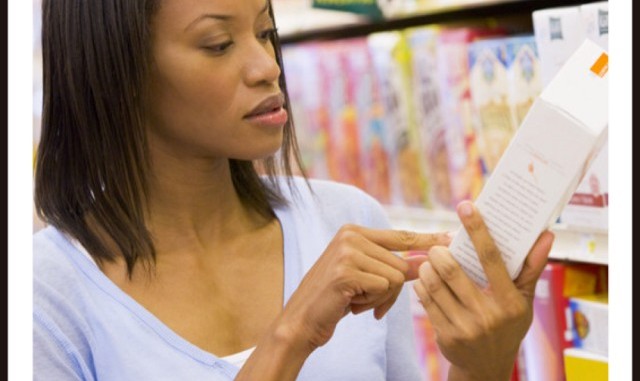
Hello Beauty Lovers,
I decided to write this post to help all our readers that are having a hard time finding products that work for them.
For example, have you tried a product that your friend raved about, only to discover that it did not have the same magical effect on you?
One of the best ways to maximize the benefits of a product and minimize your financial expenditures is to be knowledgeable about the products you purchase.
For example, if you have skin that is very Dry, using a water based product might not be for you, while if you have very Oily skin, using a product heavy on Oils and Emollients might just be inviting pimples.

Read the ingredients!!
Here are some tips on Reading and Understanding a product’s ingredients.
1. Learn the Rule of Listing. Labeling laws require manufacturers to first LIST the ingredients that make up the highest percentage of the product. For example if the product’s ingredients are:
Water, Glycolic Acid, Hamamelis Virginiana (Witch Hazel) Extract, Anthemis Nobilis Flower Extract, Rosa Canina Fruit Extract, Aloe Barbadensis Leaf Juice, Sodium PCA, Panthenol, Glycerin, Propylene Glycol, Allantoin, Polysorbate-20, Hydroxyethylcellulose, Sodium Hydroxide.
– It means the product mostly contains Water, followed by Glycolic Acid, Witch Hazel and a Flower Extract
2. Don’t fall for marketing gimmicks. I find this happens a lot when it comes to products that are labeled organic or natural. On the product’s label, you will see “Organic” or “All Natural” but when you read the ingredients you will only find ingredients that are hard to read which usually means the product contains a lot of chemicals.
– Also if a product claims to contain Vitamin C, but when you read the ingredient, you find Vitamin C as one of the LAST ingredients, then know the product contains VERY LITTLE vitamin C.
3. Obey the rule of First 7. This is a rule I came up with, I find that the MOST important ingredients are the first 7 listed. For example if a product contains the following:
Water (Aqua), Dicaprylyl Maleate, C12-15 Alkyl Benzoate, Butylene Glycol, Glycerin, Sorbitan Stearate, Squalane, Stearic Acid, Retinol, Caprylic/Capric Triglyceride, Urea, Yeast Amino Acids, Trehalose, Inositol, Taurine, Betaine, Arnica Montana Flower Extract, Epilobium Angustifolium Flower/Leaf/Stem Extract,
– According to the rule of 7, this product contains Water, Dicaprylyl Maleate, C12-15 Alkyl Benzoate, Butylene Glycol, Glycerin, Sorbitan Stearate, Squalane, These are the products that we’ll focus on. Since I know what Water, Glycerin and Squalane does, I can safely conclude this product has moisturizing and hydrating benefits, so this product is most likely a moisturizer.
4. After observing the rule of First 7, research the ingredients you DO NOT understand and learn about their safety and efficacy. Using the ingredients listed above, here are the descriptions of the other products.
Dicaprylyl Maleate: a preservative for fats and oils, and also a pH adjuster
C12-15 Alky Benzoate: an emollient and thickening agent in cosmetics
Butylene Glycol: a preservative used to keep skincare and beauty products from spoiling.
Sorbitan Stearate: a substance that’s commonly used as a humectant, thickener, and stabilizer in many lotions
– As you can see this particular product contains a lot of thickening ingredients, meaning that it is most likely a moisturizer.
5. Look for whether the label lists active ingredients. Active ingredients aren’t necessarily the ingredients with the highest concentration, so don’t let these labels mislead you.
Now that you have a bit of knowledge about reading product ingredients, let’s practice what we learned. Here are the ingredient listings of 2 random products I found in my Beauty cabinet.
Product 1.
– Observing the rule of First 7, this product contains:
Water – Hydrator
Dimethicone – silicone that prevents moisture from being lost
Glycerin- Used for moisturizing
Cetearyl Olivate – a form of Olive oil
Polyacrylamide – Thickner
Sorbitan Olivate – Also a form derived from Olive Oil
Phenoxyethanol – Preservative used in Cosmetics
Conclusion: This product is primarily made up of ingredients that moisturize and hydrate the skin, this is true because this are the ingredients of an Oil-Free moisturizer
Product 2
 Following the Rule of 7, this product contains:
Following the Rule of 7, this product contains:
– Mineral Oil: non-irritating moisturizing ingredient
–Petrolatum: usually paired with mineral oil, used as a moisturizing ingredient
–Ceresin: mineral Wax
–Lanolin: natural moisturizer used as an emollient
–Fragrance: Perfume
–Retinyl Palmitate: A form of Vitamin A usually used in Skincare as an exfoliant
– Tocopherol: Vitamin E
Conclusion: This product is mostly made up of waxes, perfume and an exfoliant. The product is created and marketed as a moisturizer for Natural hair, but based on these ingredients, this product does not contain any ingredient that feeds and nourishes the hair.
**If you need help deciding if a product will be good for you or not, you can email the ingredients to myHairmyBeauty@yahoo.com ***

